ONE BEAN AT A TIME
In rural Colombia where the illicit economy rules, how cacao helps grow peace and stability
Photos by Thomas Cristofoletti for USAID
July 2015
Across Colombia, millions of families prepare their breakfast.
For most, this includes a steaming cup of hot chocolate, or chocolatada.
In gourmet shops across Europe, in confectioner’s shops in New York and San Francisco, chocolatiers churn out truffles, molds and other delights made from Colombian chocolate—much of it exported from the South American nation as shavings or powder.
But how did it get here? How long did it travel? How many lives did it touch along the way?
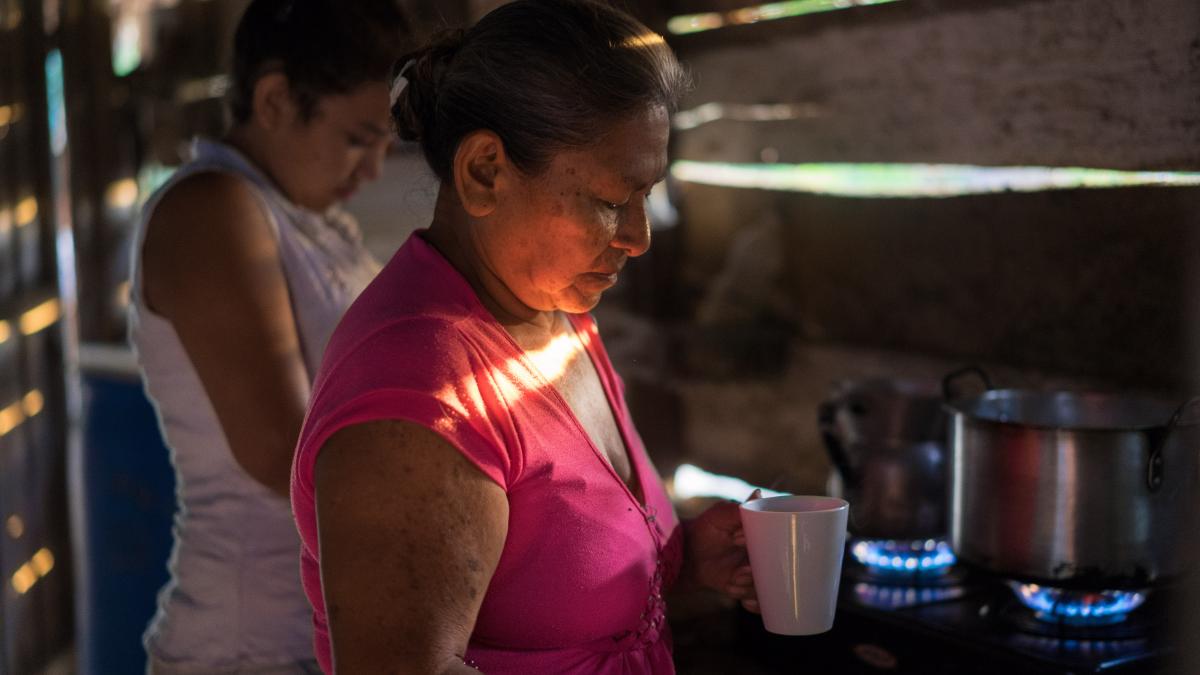
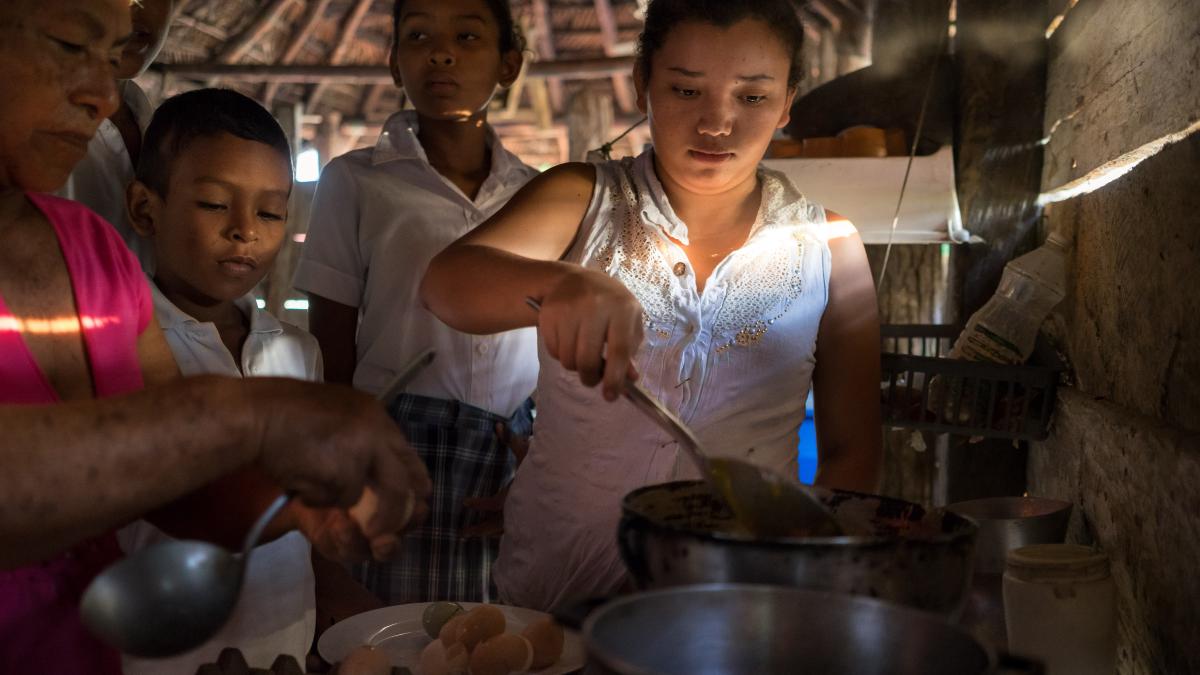
Text Lorem ipsum dolor sit amet, consectetur adipiscing elit. Mauris faucibus nibh in faucibus posuere. Sed eu quam eros. Phasellus ornare metus turpis, eu vehicula sapien scelerisque a. Pellentesque sem nunc, venenatis id turpis sed, blandit varius lacus. In sed tellus maximus elit sollicitudin congue quis tincidunt purus.
Cacao’s long journey
On its long journey to the cup or sweet shop window, this chocolate may have started as the cacao seeds of growers in Colombia’s rural regions. Its pods may have been nurtured and its beans harvested by farm families that depend on the crop as a source of income.
Don José Blanquiceth—farmer and father, husband and grandfather—is the head of one of those families.
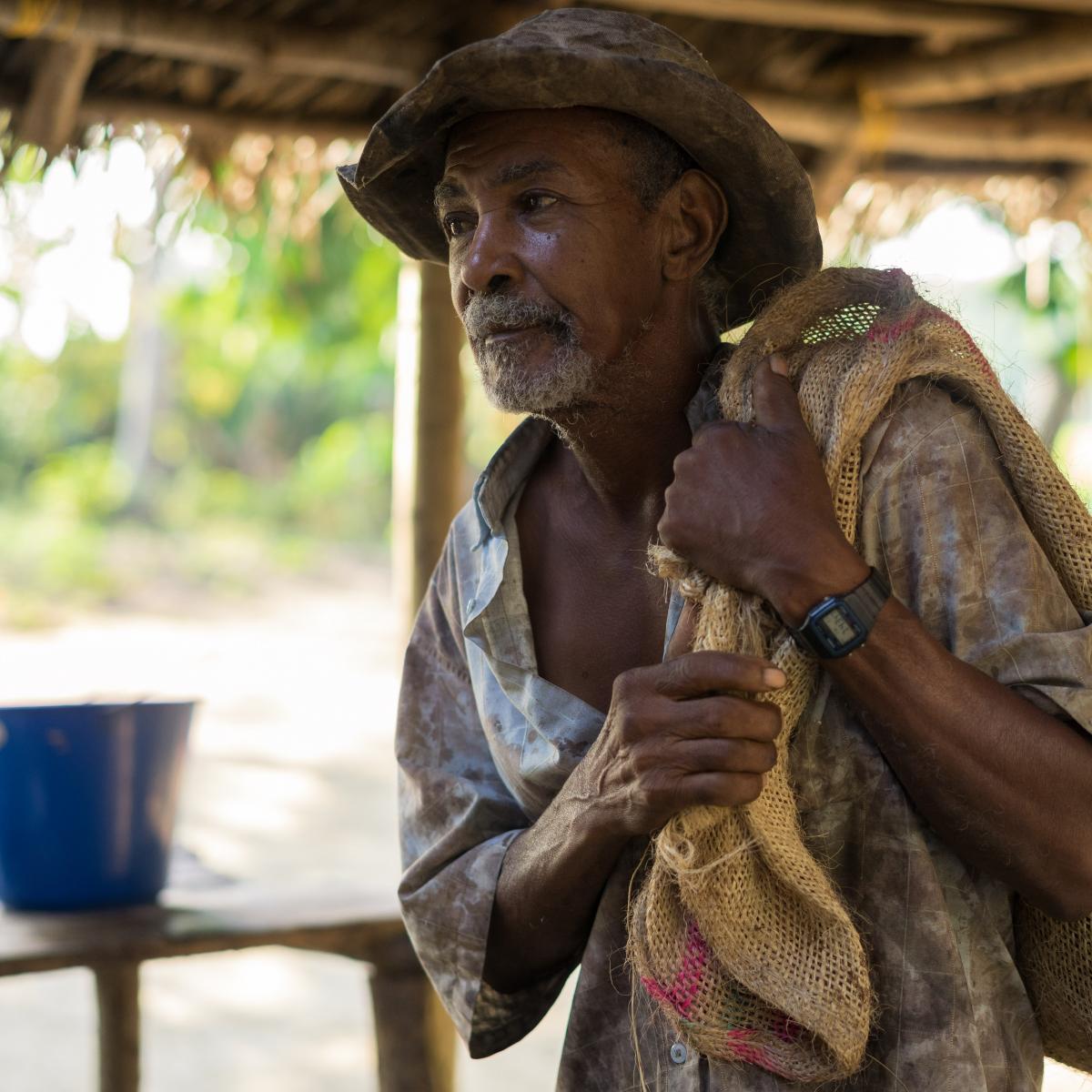
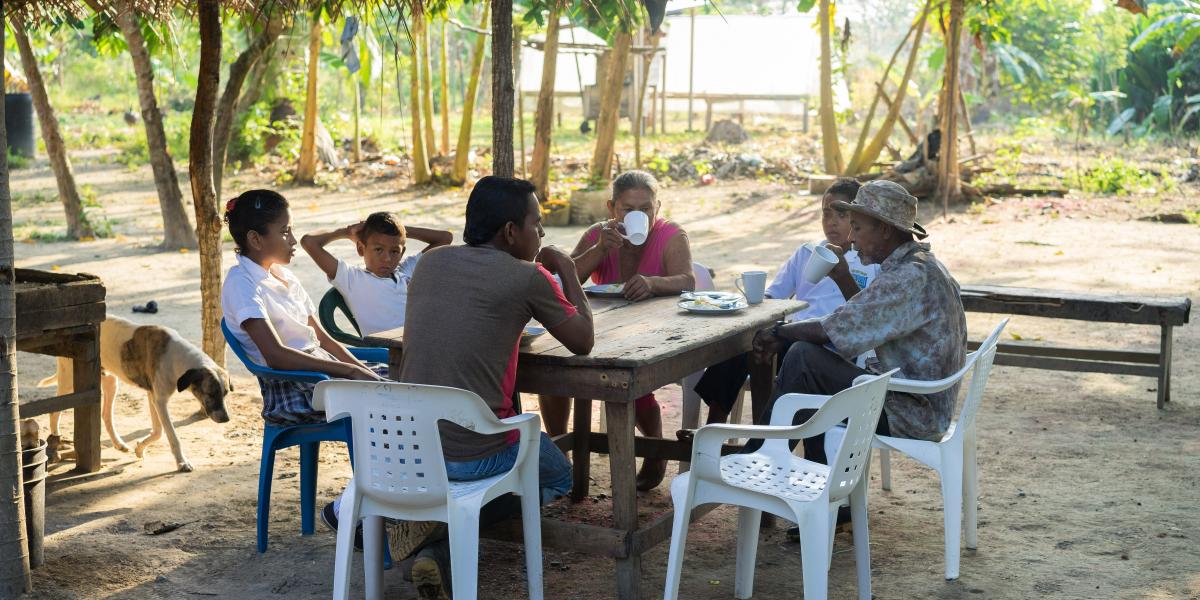
Don José lives with his wife and three grandchildren on a tiny tropical island in northwest Colombia, reachable only by motorboat. Barely visible on a map, the Isla de la Dulzura is a spec of land in the middle of the Cauca River, which snakes through Colombia’s north—also serving as a transit route for the region’s narcotraffickers.
A welcome alternative
Like many of the island’s 300 residents, Don José works a small plot of land growing whatever gives him the best chance of survival—traditionally, bananas. But bananas are a fickle crop. And storms and plagues can destroy a harvest.
Starting in 2006, with support from USAID, Don José began growing cacao on his 5 acres of land, starting with just a few plants and adding more each year. Today, he can make around $400 per month from cacao—enough to cover his family’s needs. For many farmers, this steady source of income is a welcome alternative to the more dangerous and illicit options that tempt their fate and fortunes.
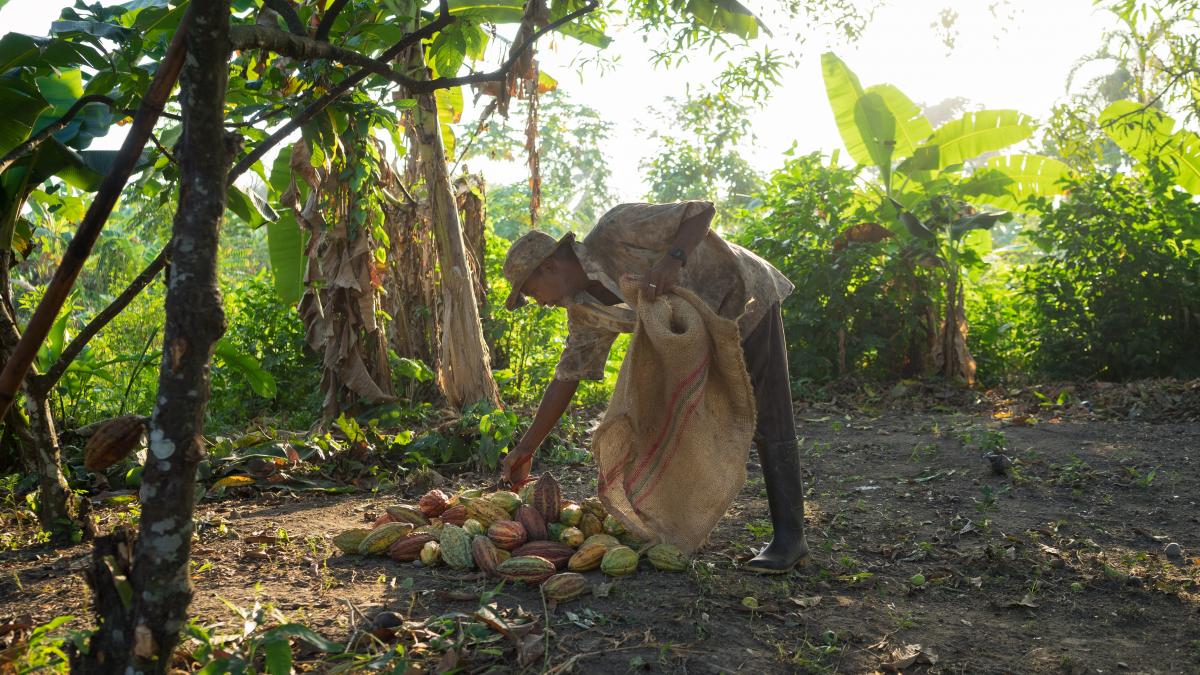
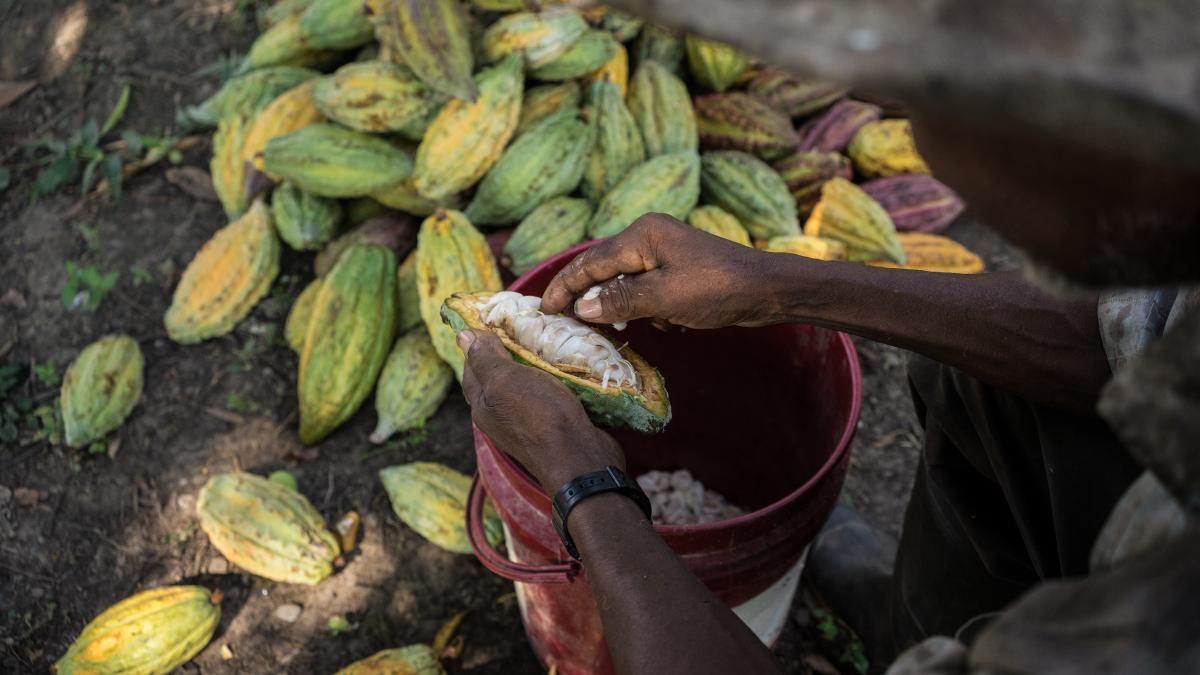
Don José’s son is one of those farmers.
Orley Blanquiceth is 37. When he is home, he helps his father in the fields. But for most of his adult life, he has travelled to other parts of Colombia for long stretches—often years—seeking temporary work in the illicit economy.
Mainly, he has worked as an illegal miner, working long hours in dangerous conditions. But Orley has also dabbled in the drug trade, cutting leaves of the coca plant—the source of cocaine—for narcotraffickers.
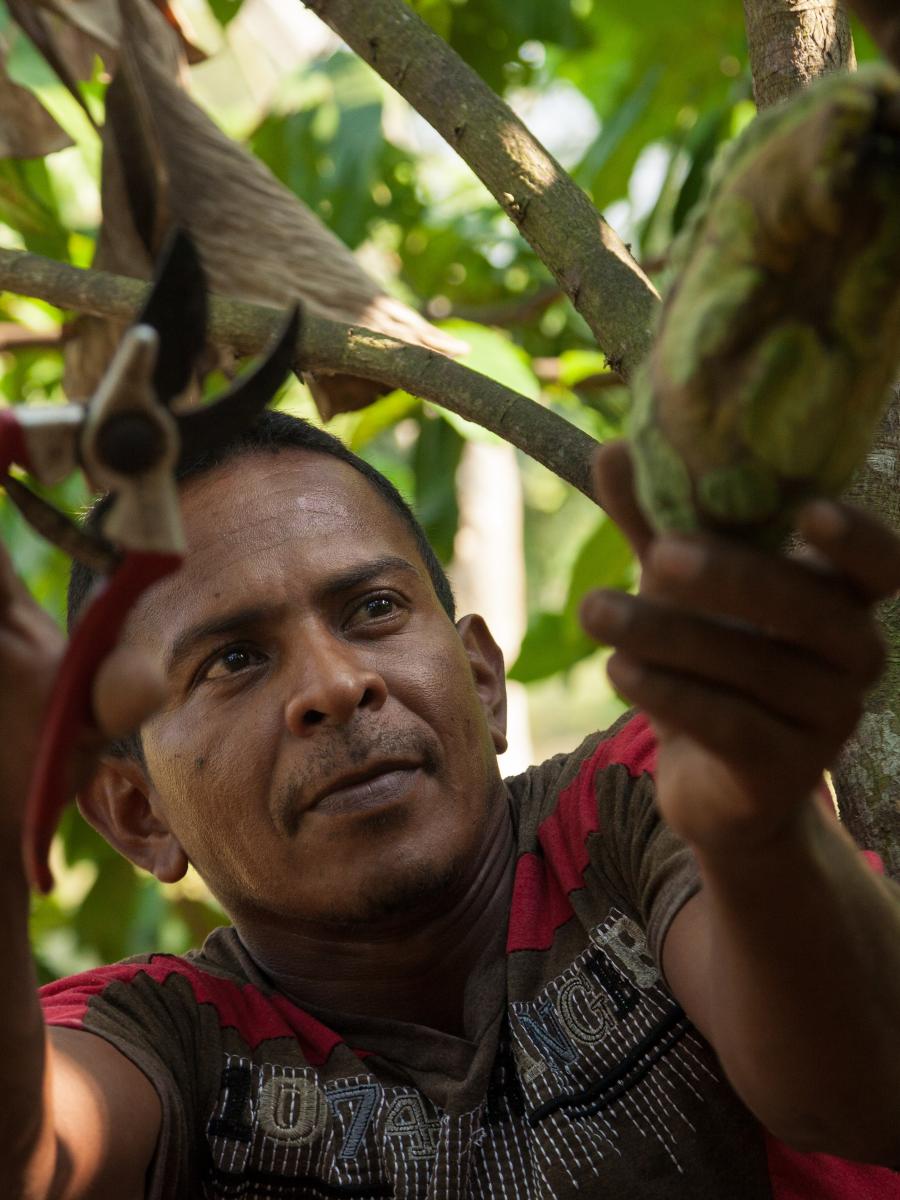
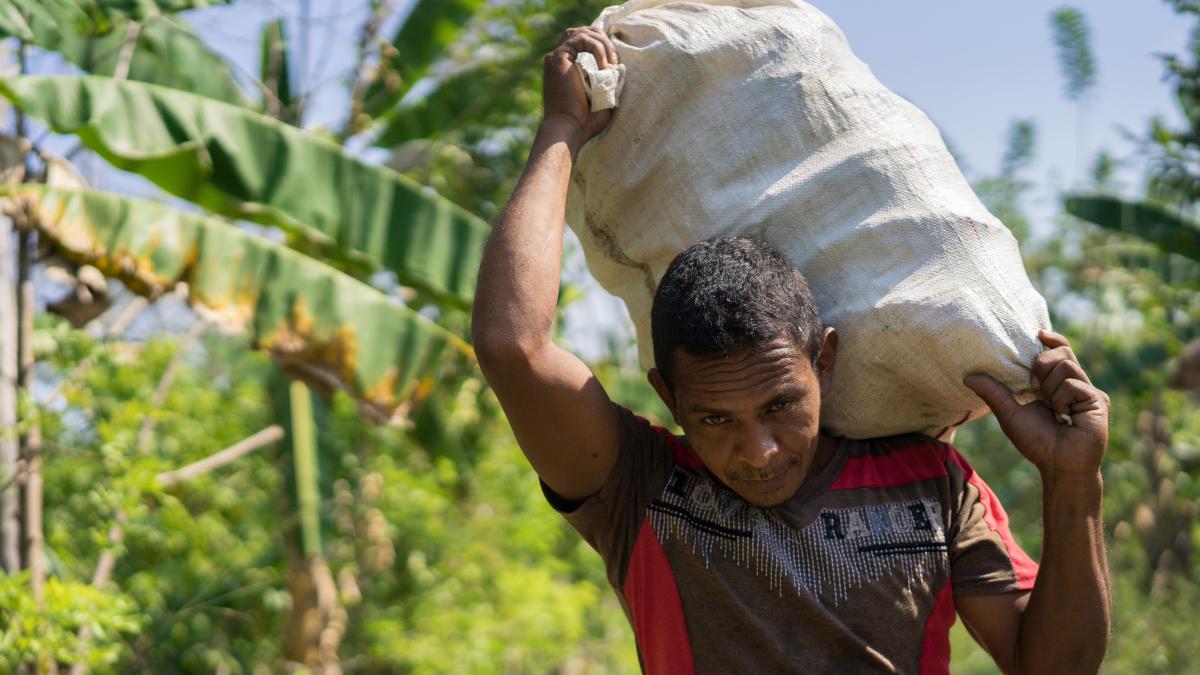
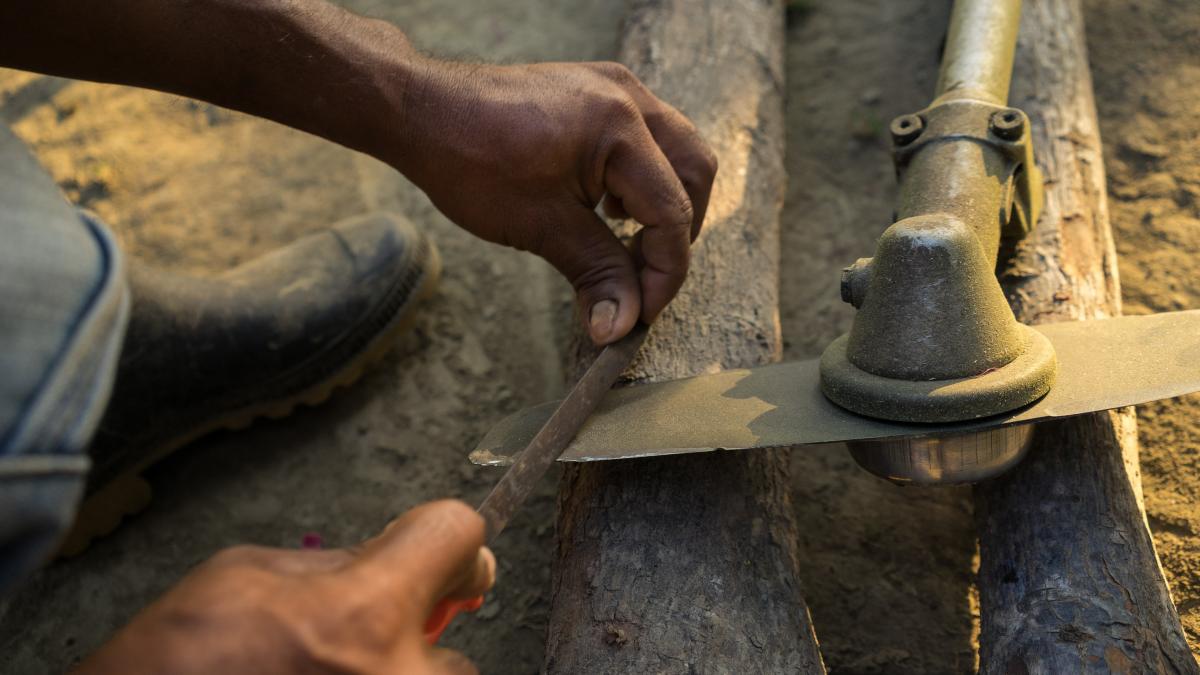
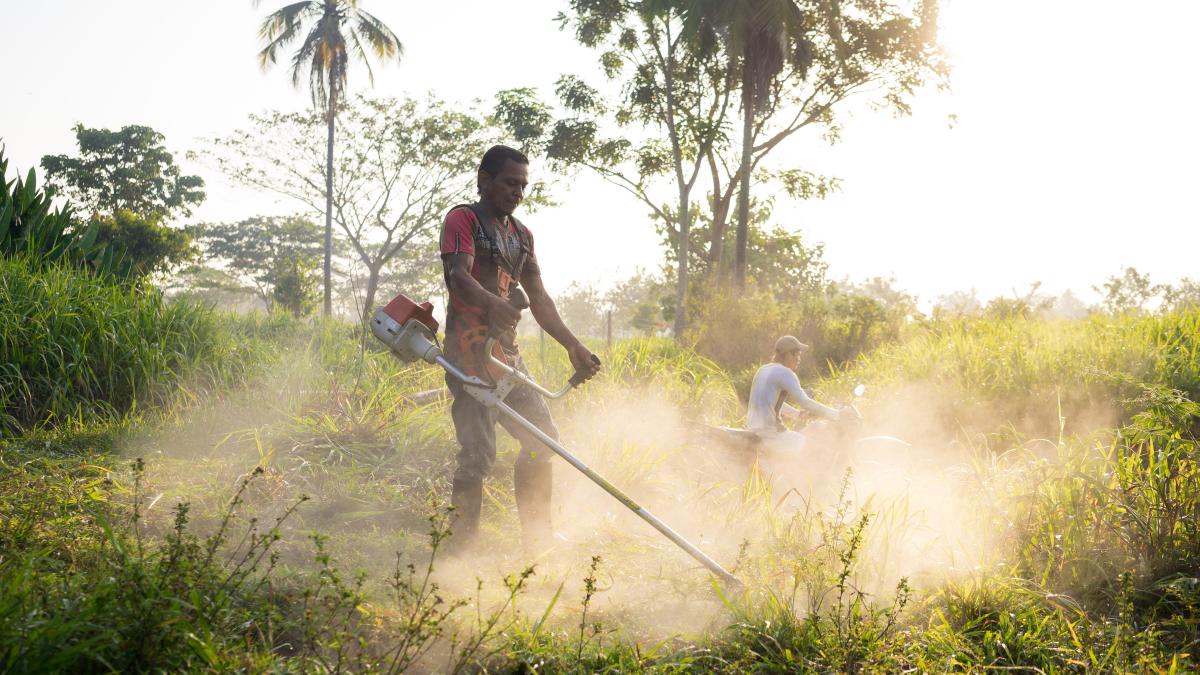
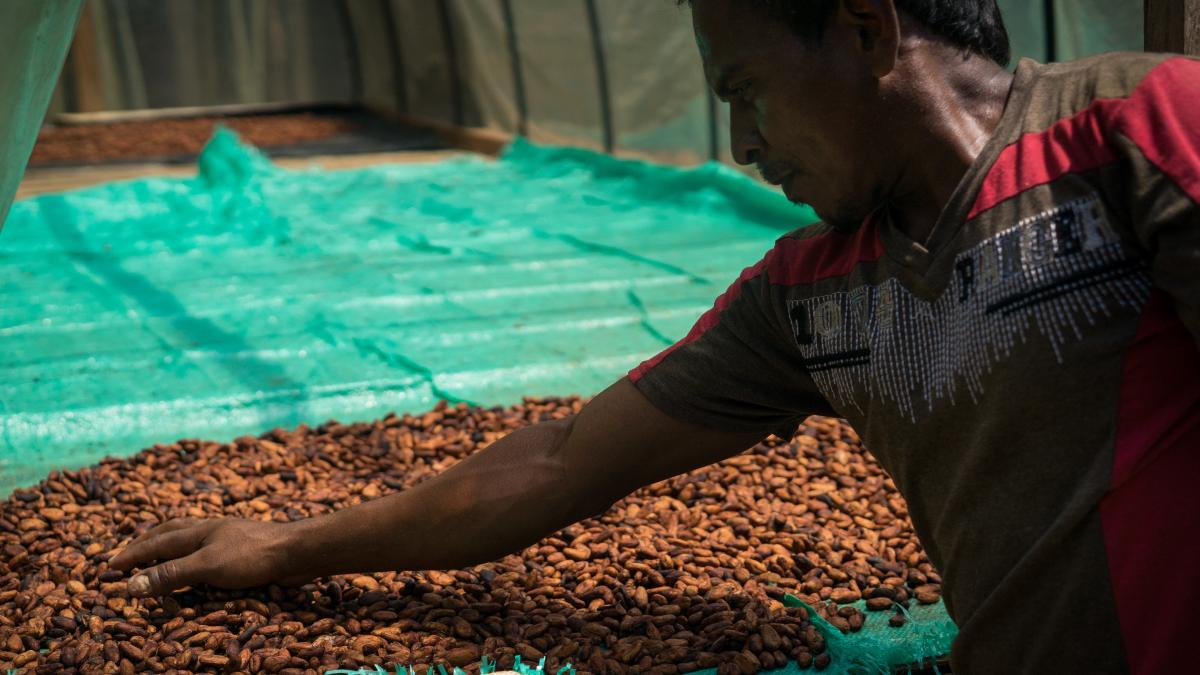
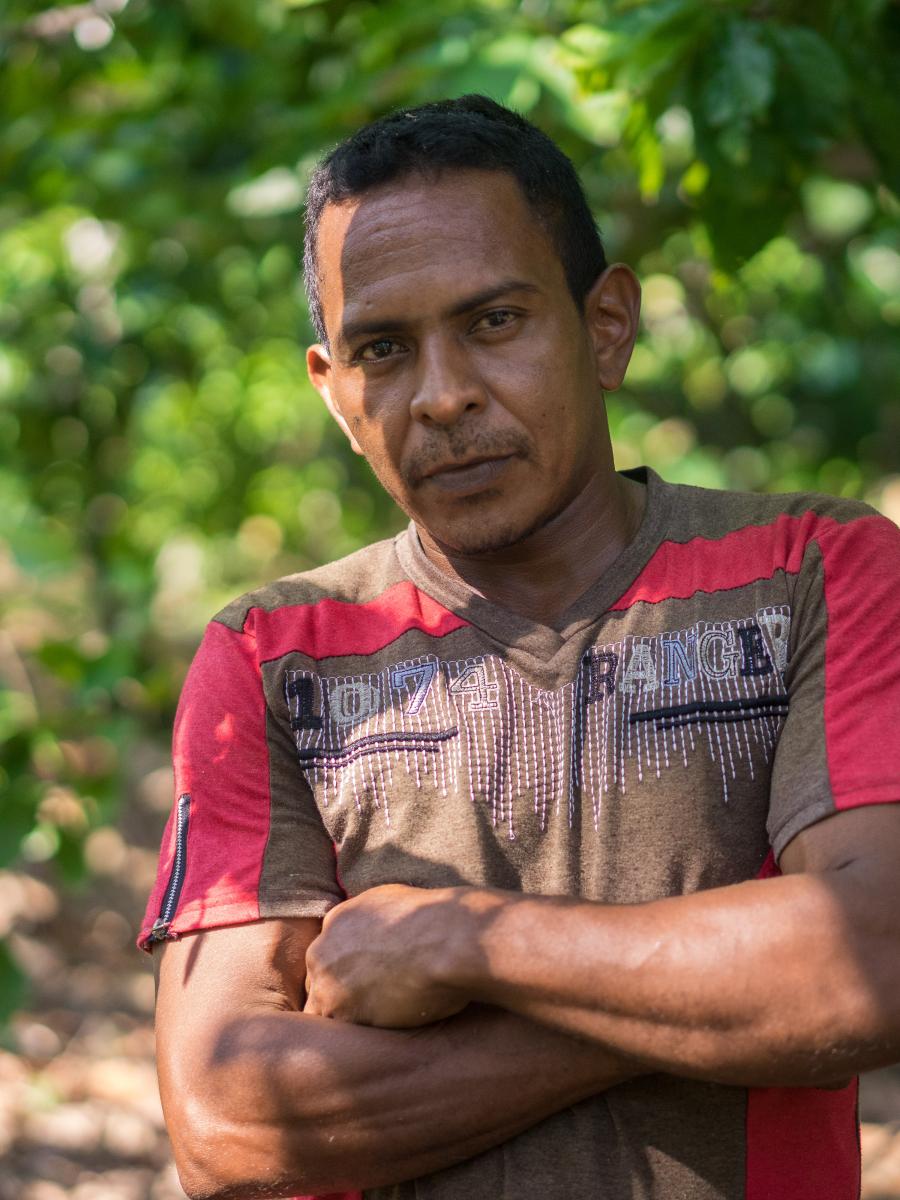
Limited work options
Orley, like many young men of his generation and geography, has limited work options.
The mines and coca fields are alluring options for those looking for fast cash. But they are also fraught with peril. One of Orley’s friends lost his leg in a mine. Those who cut coca are beholden to ruthless narcotraffickers on one hand, and persecuted by the authorities on the other.
Many still take the risk: “My friends had told me that cutting coca you can earn lots of money,” says Orley. “If there were more opportunities to earn more money here, people would stay.”
Cacao could be one of those opportunities.
The crop is not new to the Isla de la Amargura. For decades, many farmers have grown a plant or two alongside their bananas. But the only outlet for their cacao was local middlemen, who would purchase it for cheap and earn a tremendous profit on resale. The island’s small growers—whose investment and toil had nurtured the crop from seed to bean—struggled to make a living.
Ana Almanza was one of these growers. “Before, we would sell our cacao to a man who bought it for $2,000 pesos (less than a U.S. dollar) per kilo and sold it for double,” she explains.
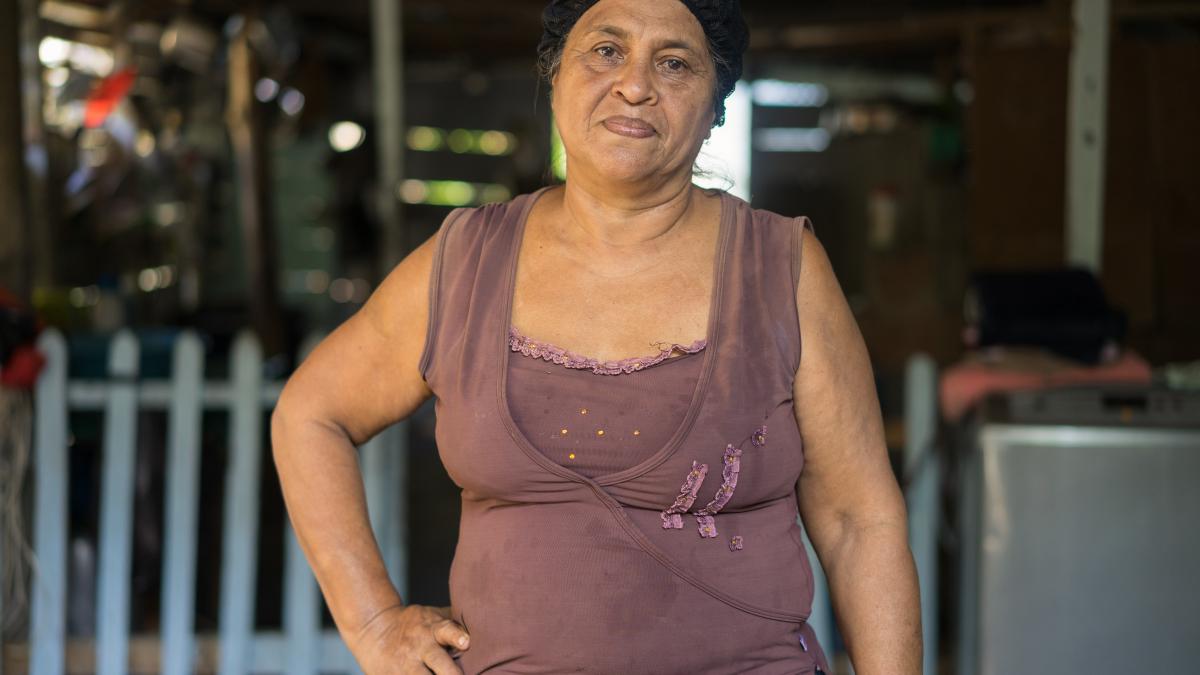
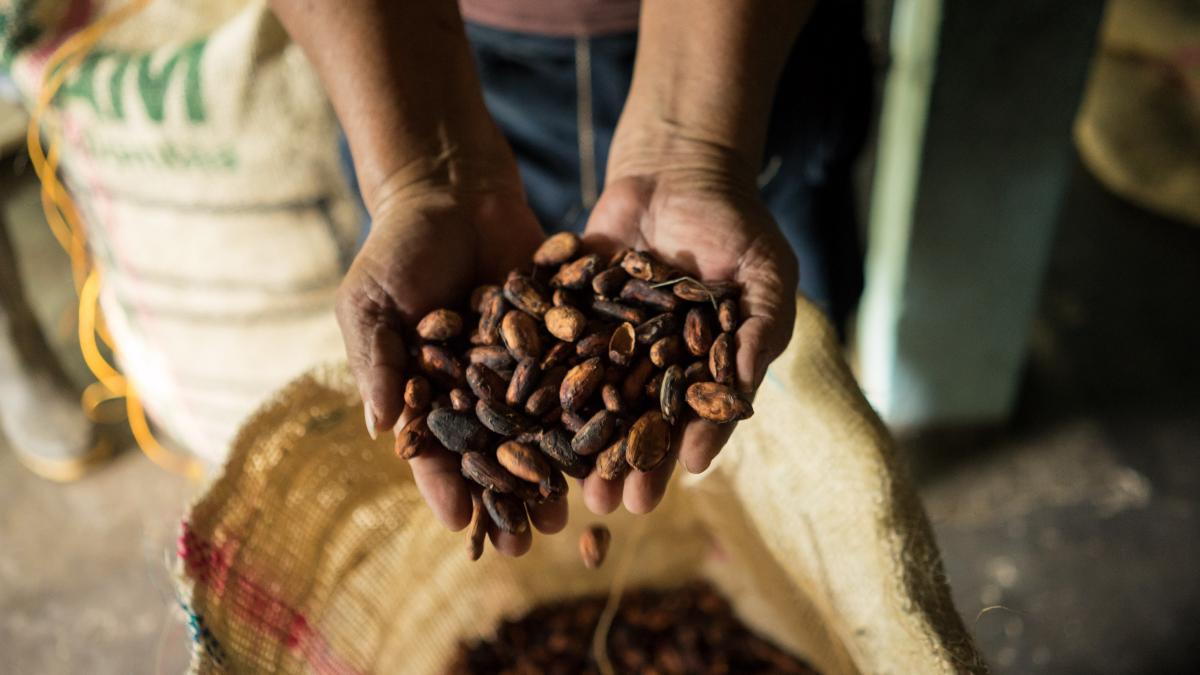
One of seven
Ana harvests cacao on her 6 acres of land and runs a small bakery out of her home.
She is also the leader of one of seven cacao-growers’ groups in the area. As the head of this group, Ana buys harvested cacao beans from several of the island’s farmers, including Don José, and sells them to the USAID-supported collective Chocolate Colombia.
When Don José arrives at Ana’s home, she inspects the crop he’s brought, weighs it, and then pays him a fair market price, which Chocolate Colombia determines using the New York commodities exchange as a benchmark.

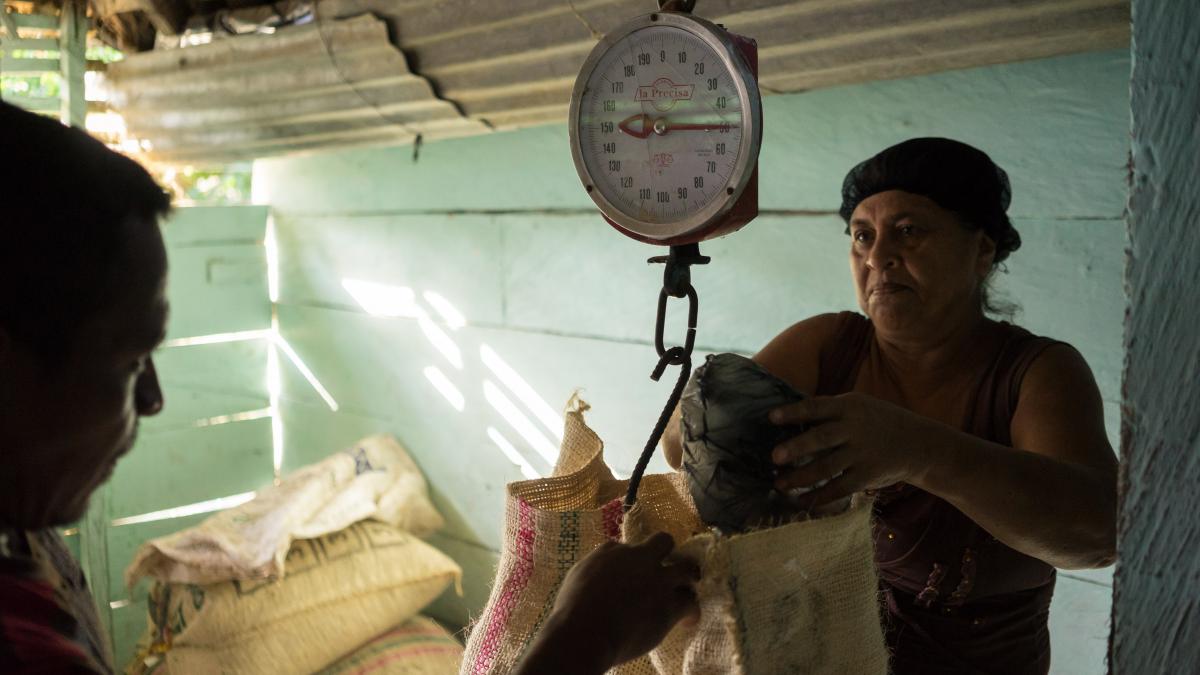
Donkey, motorboat and truck
When the transaction is complete, Don José heads home, cash in hand. Doña Ana starts her journey to mainland Caceres, toting up to 500 kilos of cacao beans that she has pooled from the island’s growers.
The trip—by donkey, motorboat and finally truck—to Chocolate Colombia’s weigh station takes well over an hour. Ana makes it once every two weeks. In her role as leader, advocate and intermediary, she makes a small profit. In her role as cacao farmer—the first link in the chocolate value chain—she is now ensured a fair market price for her crop.
“We earn double now from cacao because it’s regulated,” Ana explains.
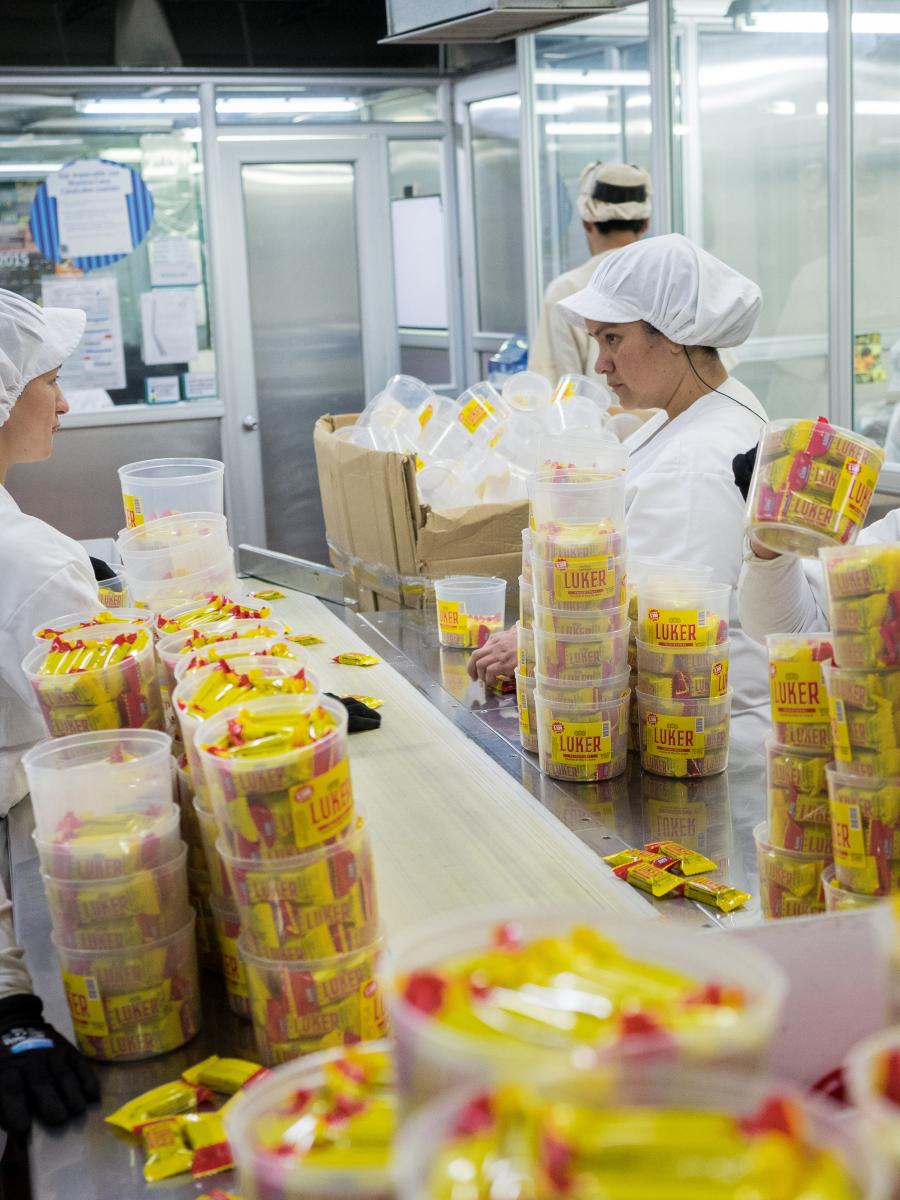
High-end chocolate
After her drop-off, Ana begins the reverse journey home. But Ana and Don José’s cacao has a few more stops.
Casa Luker is an international chocolate company based in Bogotá. It gets about 10 percent of its raw cacao from Chocolate Colombia—over 800 tons per year—which it turns it into high-end chocolate products, such as shavings and bars, cocoa butter and powder to sell to markets across South America, Europe, Russia and the United States.
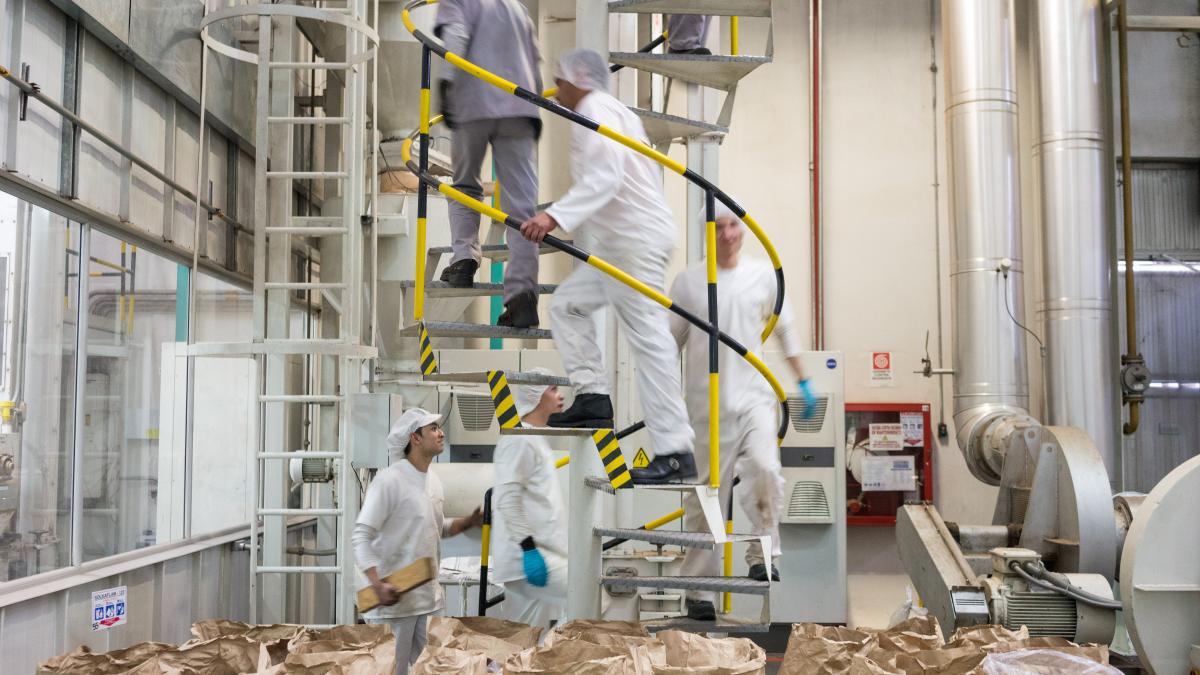
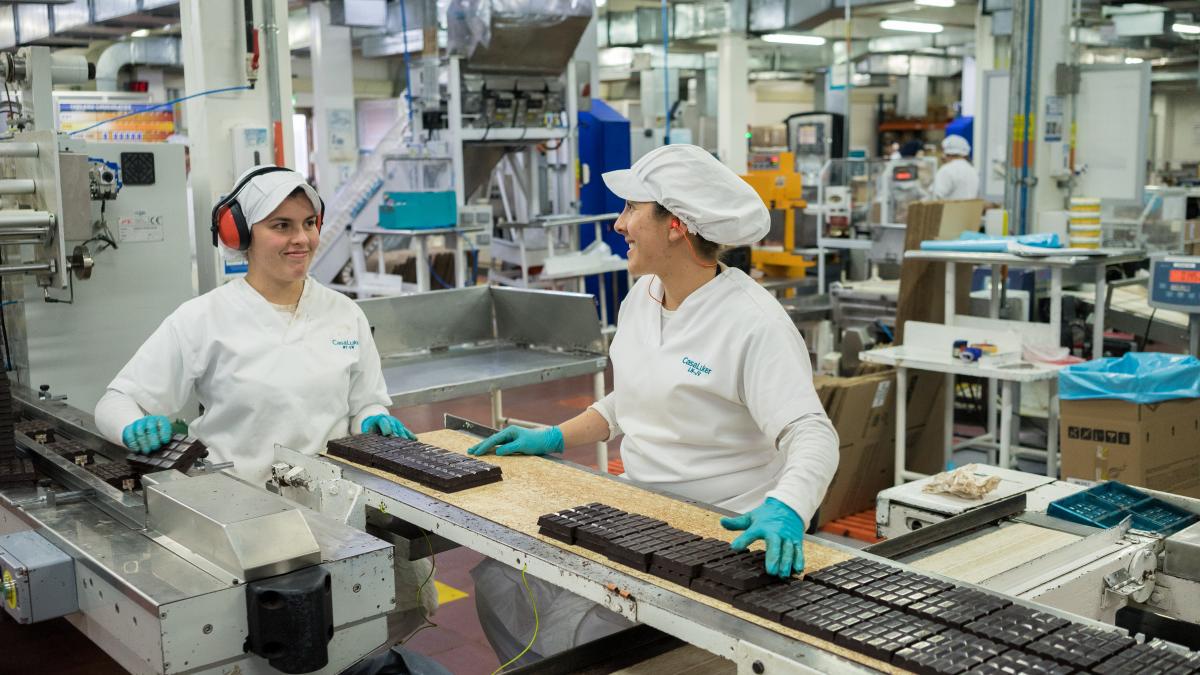
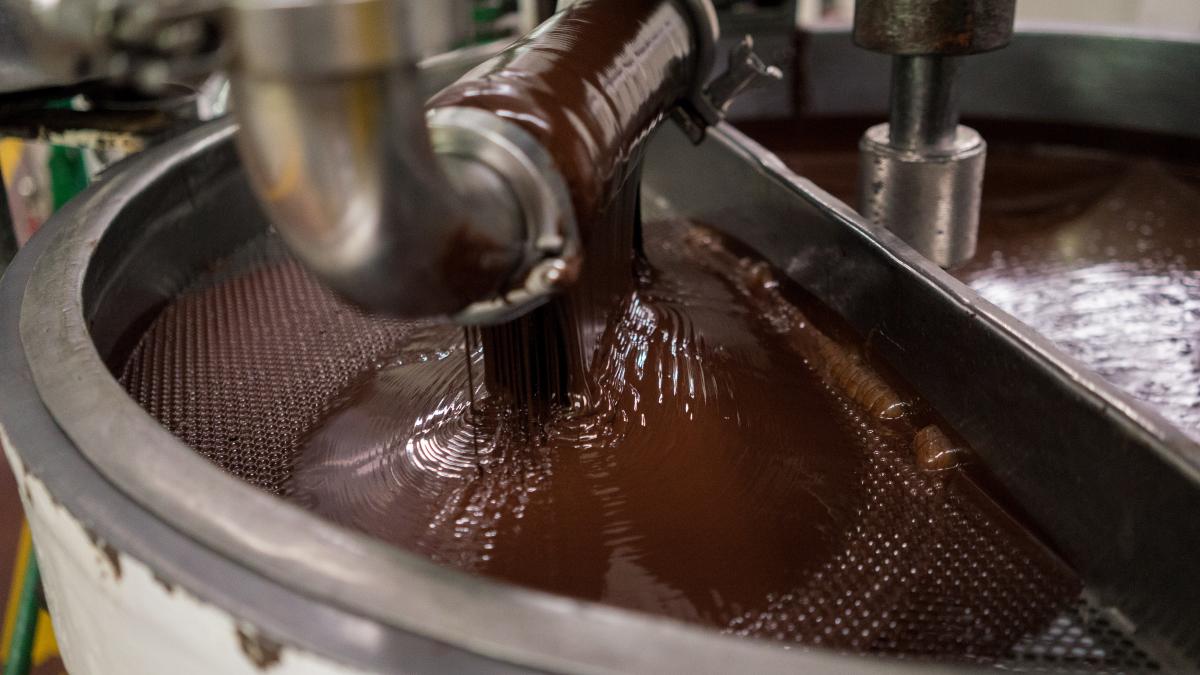
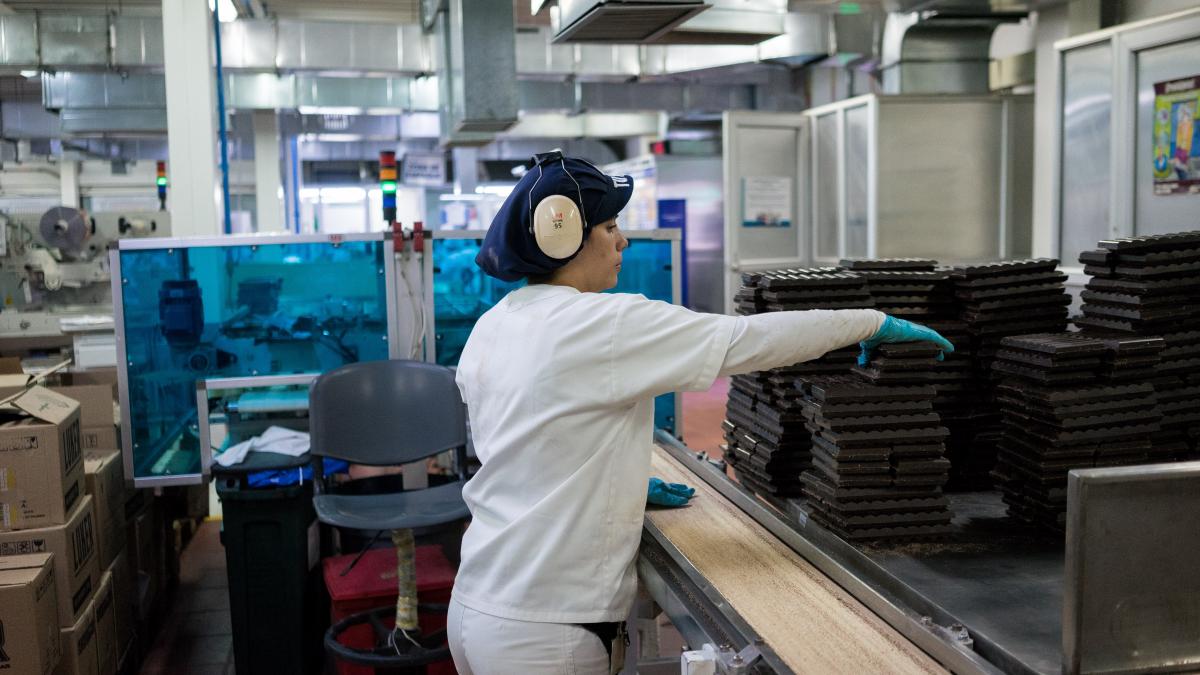
Don José and Orley may not know where their cacao ends up.
They may never taste a chocolate square made from their beans. But they do know that their crop is providing for them in ways it hasn’t before.
The cacao’s journey, from the pod to Ana’s home, through the inspection and weigh stations of the chocolate collective, and then on to the Bogota-based factory is what ensures that Don José can feed his grandchildren and keep them in school. It helps young men like Orley resist the illicit economy.
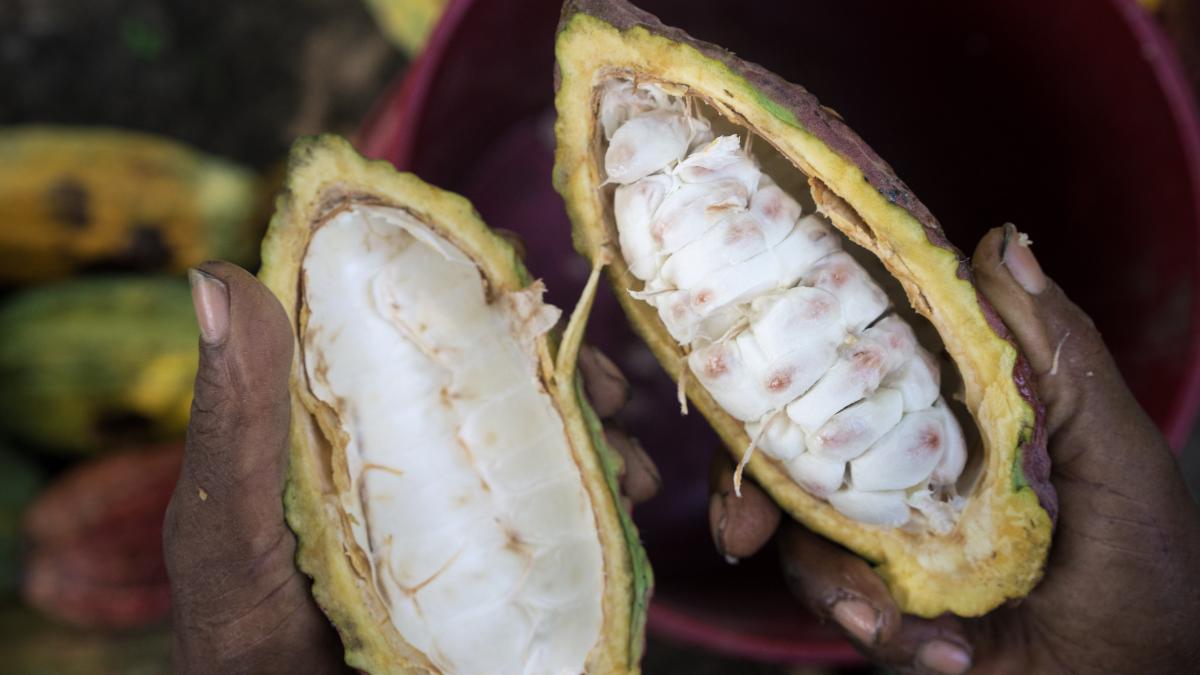
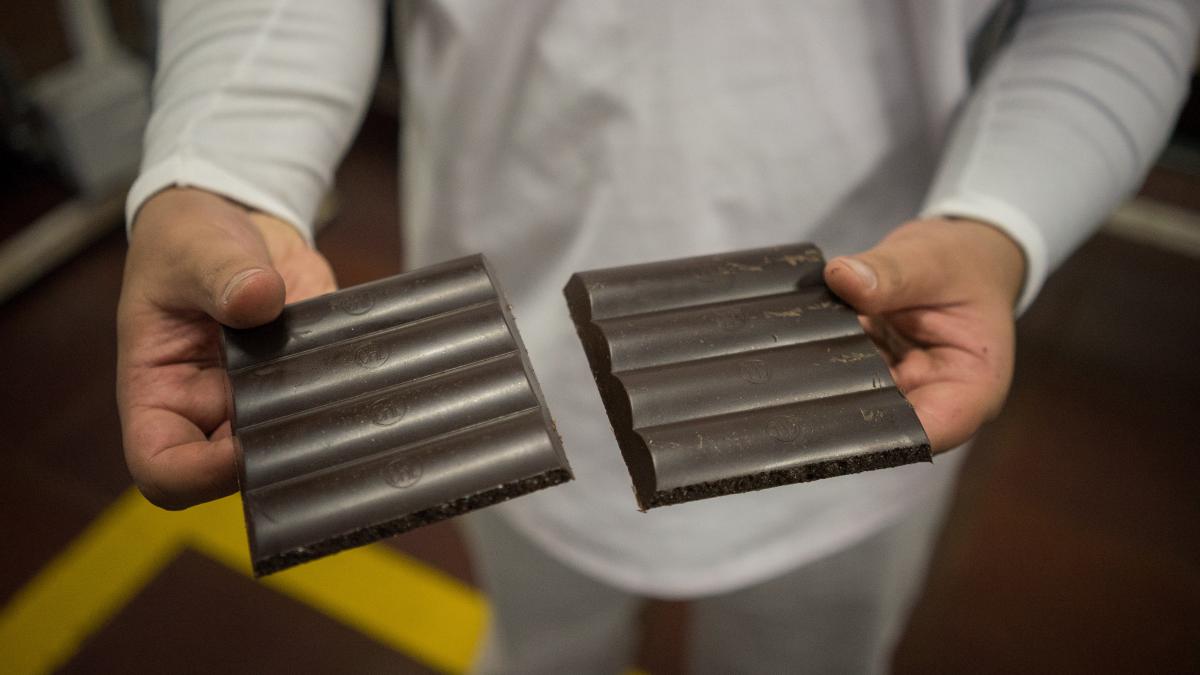
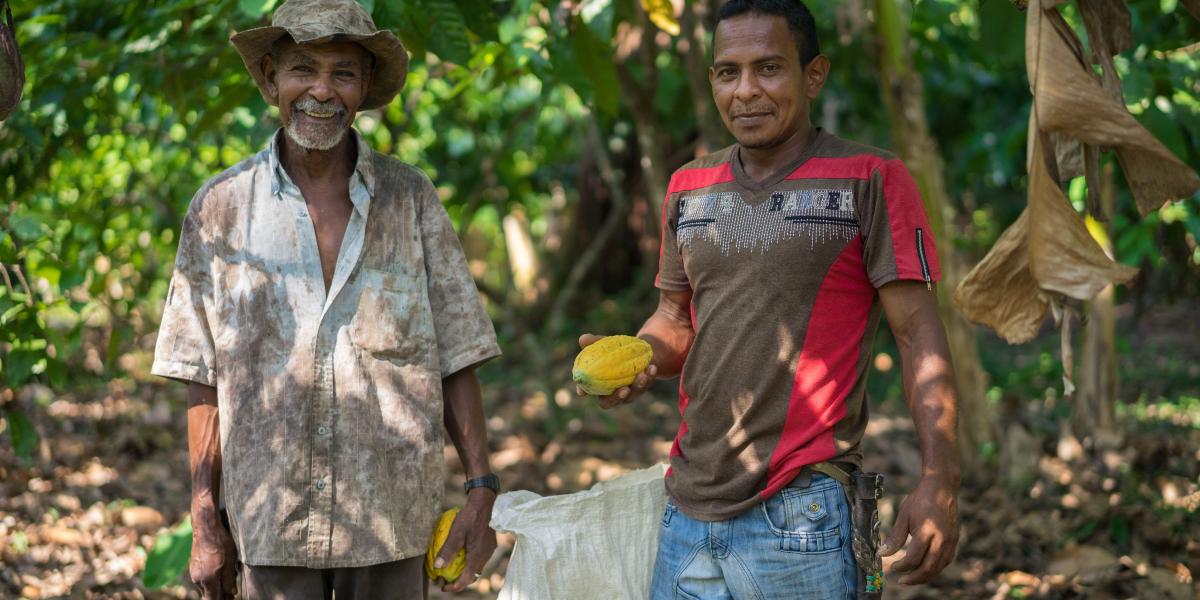
“I want the best for my kids,” Orley says. “My dad is making a lot of money from the cacao, and my parents buy them everything they need. I want them to have a great job and want them to study.” One generation’s wish to another. Wishes granted: one bean at a time.
About This Story
Colombia has suffered decades of violent conflict, with the rural regions hit hardest. Caught in the fighting between the government, the FARC, paramilitaries and other illegal armed groups, communities have grown deeply distrustful of formal institutions. Over 7 million people are considered victims of the conflict—around a quarter of all Colombians.
Without strong institutions and with limited economic options, many turn to the illicit economy—working in the illegal mines and drug trade—to earn a living.
USAID’s cacao program is helping 1,900 families in Colombia’s northwest coca belt earn a steady income from cacao by connecting them to the chocolate industry. A sister program helps 2,300 families in Colombia’s southwest. Over the last 10 years, USAID’s cacao activities have helped more than 21,000 farmers by providing them stable, viable options to earn a living.
The cacao project is one of many USAID-supported activities that benefit families in 16 of Colombia’s most violence-torn municipalities as part of Colombia Responde—a program to help the Colombian Government rebuild social connections and foment citizen trust in formal institutions.

